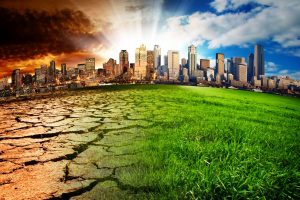India is now in the unlocking phase and the Union government has directed states to evolve their own unlocking strategies to minimize restrictions and boost economic activity. The strategy for unlocking has to keep a balance between loss of lives through infection and loss of livelihoods due to economic slowdown.
A strategy needs to be adopted which separates, segregates and protects the vulnerable (mostly the old and those suffering from diabetic and hear- related ailments) from Covid and simultaneously opens the economy to others to ensure livelihoods. The segregation strategy should note the fact that the people whose lives are vulnerable due to Covid are different from those whose livelihoods are at risk from lockdown, although there are some overlaps. The recent relaxation of lockdown provided the much needed breathing space for the poor, but it appears that corona cases have increased sharply as a result. Many state governments are now weighing the options of further lockdowns to keep a balance between direct loss to lives and indirect loss to livelihoods. It is important to count the people who are vulnerable to Covid and who are at risk of loss of livelihoods due to the lockdown in order to evolve a balanced and calibrated strategy.

Many studies show that aged people with diabetes, heart and lung related ailments are at risk. A recent Lancet paper found that 1 in 5 people (22 per cent of the global population) worldwide are at risk of severe Covid. The study reached this number by counting individuals with underlying health conditions. In India there are about 17.4 crore people (5.5 crore heart, 6.5 crore diabetic and 5.5 crore lung disease patients) who are at risk. In just six months, there are more than one crore confirmed cases, over half a million have died and the world economy plunged by more than 6 per cent. India’s tally has crossed the 7 lakh mark, the death toll has climbed above 20,000. It indicates fatality rates (deaths as a percentage of total people infected) were 70 per million in the world but 15 per million in India. Given that the testing rate in India is low at 7,300 tests per million, compared to around 100,000 tests/million in Spain or Italy, our actual fatality rates are an overestimation of real figures.
The more we test, the more we will find cases and the denominator in fatality rate increases, which reduces the fatality rate. An Indian Council of Medical Research (ICMR) survey shows that the ratio between reported cases and true infections is about 1 in 20. It indicates that the actual fatality rates may be quite low (0.15 per cent only) and many cases are asymptotic or with mild symptom and don’t require hospitalisation. The low fatality rates in India are due to a combination of factors. The main defence against Covid is lockdown, but lockdowns induce loss of livelihoods and increase hunger, poverty and unemployment among the poor, who cannot survive long without employment. Many people lose their livelihoods, jobs, savings and assets and may not be able to recover. The negative effect of the reduction in GDP is real; it will not be visible immediately but will have long-lasting effects especially in developing countries like India. The World Bank anticipates up to 6 crore people could be pushed below the extreme poverty line because of income losses. In India, being a developing country, we can consider the bottom 40 per cent of the people, that is 54 crore out of 135 crore population are at risk of going into poverty, hunger and food insecurity, if the lockdown is prolonged. Once we protect the lives of the vulnerable, the next priority is ensuring livelihoods, employment and income opportunities for the poor. They are mostly migrant workers, casual labourers, small and marginal farmers, urban homeless etc.
A reputed journal claimed that an economic crisis resulting from an extended lockdown could claim more lives than the coronavirus itself due to hunger and poverty. The World Bank and IMF reported that global GDP will fall by 4.9 per cent and the Indian economy by 4.5 per cent this fiscal. Fitch Ratings predicted that India’s GDP will drop by 13.8 per cent in the July-September 2020 quarter. Data from other countries also shows imminent recession. The World Bank reported that, in developing countries including India, economic contraction may lead to increase in extreme poverty. It forecast that Covid will push 70 crore people into extreme poverty worldwide, measured at the international poverty line of $1.90 per day. The postCovid scenario assumes that the outbreak remains at levels currently expected and that activity recovers later this year. Under the post-Covid scenario, the vulnerable private sector will exit the markets, vulnerable households will sharply reduce consumption, and several developing countries will see heightened financial stress. Some studies have pointed out that economic contraction may also lead to an increase in hunger, distress and fatality rates among younger people, implying a greater loss in human-life years in case of economic contraction. Considering that life expectancy in India is 69 years, the loss in human life due to the death of a 29-year-old translates into a decline in human-life years by 40 years (69-29 = 40), whereas a death of a 65-year-old translated to a loss of only 4 years. Segregating 17.4 crore vulnerable people will help in targeting them to ensure to stay at home, focused health care facilities and prioritise them for probable vaccination to reduce infections and death rate. Even among this vulnerable category, many don’t require hospitalisation even if they are infected. Only a small fraction needs to be hospitalised; an even smaller fraction needs ventilation. If the state evolves strategies to protect this vulnerable category, there will be little problem in opening up of the economy and alleviate fear among the non-vulnerable people to go to work.
A one-size-fits-all approach may not be suitable to achieve the twin goals of saving lives and keeping the economy going. The more precision we can get about those at risk of hospitalisation, the better we can work with those people and tailor our response appropriately with little harm to the economy. Overall, India’s Covid strategy should prioritize protective measures for the elderly with diabetic, heart and lung related ailments. On the other hand, it needs to prioritise ensuring employment and income opportunities for families of the 54 crore population who are at risk of loss of livelihoods. In spite of unlocking, we cannot expect the economy will recover fully; many will lose jobs permanently.
Experience shows that only 60 per cent of workers who lost jobs will get them back while the remaining will need to find alternate employment sources. Until they find alternate employment, the government must continue to provide free foodgrain and cash support through Direct Benefit Transfers (DBT) and similar schemes to compensate subdued economic activity.
(The writer is Principal Scientist, ICAR-Centre Research Institute for Dryland Agriculture, Hyderabad. The views expressed are personal)












